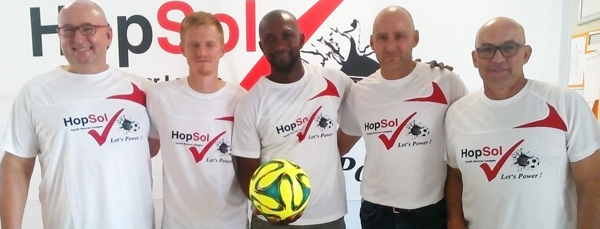
Shooter to revive trap and skeet shooting

From left to right: Dr Rainer Hassel, Zander Burger the youngest participant receiving his prize from Dr Jürgen Hoffmann at the most recent Clay Target competition
The move to revive clay target shooting is a critical issue which entails involving the majority of Namibians to participate in the sport amidst all the hindrances and mysteries which have drawn people away from participating in the sport over the years.
Clay trap shooting is the art of shooting at special flying targets, known as clay targets, with a shotgun. However, for one to own or possess a shotgun, a shot gun certificate is required, which will also require a police inspection of the storage security, usually a steel gun cabinet.
According to Dr Hoffman , the Chairperson of the Clay Target Shooting Association of Namibia, “Clay Trap Shooting has been a tradition in Namibia for many years. We have set up clubs all over the country in Swakopmund, Otjiwarongo, Oranjemund, Mariental and Windhoek and they used to have their competitions amongst one another which enabled them to participate in competitive activities.”
One of the reasons why the clay target shooting had not become widespread in Namibia, according to Dr Hoffmann, is due to the expenses involved. These expenses associated with the sport, have over the years drawn away many people who cannot afford to spend much of their money in procuring expensive shotguns for use during clay trap shooting.
The white community regard clay trap shooting as a tradition which they have been practising for many years, enabling youngsters to start shooting from an early childhood stage and progressively improving in their shooting skills as they grow up. This could be an explanation as to why it is not a big issue for them to buy an expensive shotgun to use during clay trap shooting.
The price of one shot gun, according to Dr Hoffman, ranges from around N$5000 for a cheap second hand shotgun to N$100 000 for a good gun. This factor has created a “barrier to entry” for many black Namibians, who according to their traditions and lifestyles, cannot part ways with such amounts of money for sport, alongside many other priorities.
According to Dr Hoffmann, it has not been an easy walk towards growing the CTSA membership, due to the fact that a person has to bring his/her shotgun which they have to buy themselves and register with the police and right authorities so as to join others in clay trap shooting.
Hoffmann also said the CTSA hopes to work with soldiers and policemen as part of their membership and these will most likely perform well and even represent Namibia at a national level.
The first CTSA competition for the year was successfully hosted at the Clay Target Club Windhoek recently. ATA results were as follows: Jurgen Hoffmann was the overall winner, followed by Harald Sax and Sven Ahrens occupied the third position. In the Auto Ball Trap, Harald Sax was the overall winner, whilst Gielie van Wyk came out second and Monika Thesen was third.
However, Hoffmann explained that the club’s membership base is now very wide and includes representatives in some of Namibia’s esteemed local gun shops who are the suppliers of guns and ammunition.
The next competition has been set for 21 June.










































